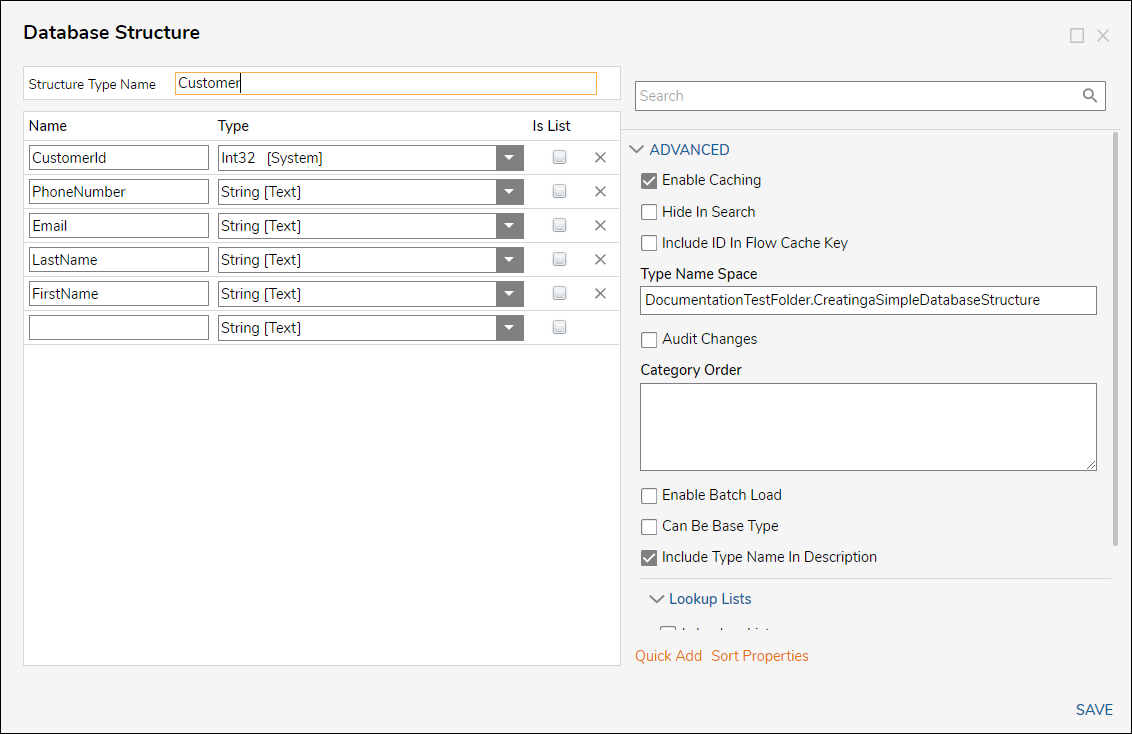Overview
| Data Structure Quick Summary | ||||||
|---|---|---|---|---|---|---|
| Complexity? | Performance Impact? | Saves to Database? | Configuration Folder? | Entity Framework? | Folder Behavior? | Process Tracking? |
| Low | Low | Yes | Yes, but not by default | Yes | No | No |
A Database Structure defines an object that is stored in a database. The Database Structure exists only in the database, not in the Portal like an Entity or Folder Extension. The Database Structure can still be reported on and can have actions built into it if the Configuration Folder is turned on.
Default Text Length
The default setting for all text stored in the database is 255 characters; however, this can be modified.
Example
- In a Designer Project, select Create Datatypes/Integration and select Database Structure.
- In the Database Structure window, enter a name in the Structure Type Name. Define the data members and their respective types. Click SAVE.Batch Load settingWhen enabled, this setting creates the data type as a database-stored data type with an additional table that is the copy of the main table. By populating the copy table with data and then merging that data into the other, real tables on the database, it allows for efficient storage and use of large sets of data.
Database Structure Creation Settings
| Setting Name | Description | |
|---|---|---|
| ADVANCED | ||
| Enable Caching | Enables the Entity to be loaded into the cache | |
| Hide In Search | Hides the data type from appearing when being searched | |
| Include ID In Flow Cache Key | Adds the GUID to the Cache Step Key for easier searching | |
| Type Name Space | Creates the unique identifier for the Entity (namespace.typename) to generate the SQL table name for the Entity (namespace_typename) | |
| Audit Changes | Saves changes to Entity data in the Audited Entities table. This option is used when data monitoring is required for this Entity | |
| Category Order | Allows data field categories to be organized by the Designer | |
| Enable Batch Load | Allows some batch inserting actions to be taken on the back end | |
| Can Be Base Type | Allows the created type to be used as a super-class for sub-classes | |
| Include Type Name In Description | This enables or disables the visibility of the Type namespace | |
| Is Lookup List | Specifies if the data will be a Lookup List | |
| ACTIONS | ||
| Enable Actions | Allows actions to be used | |
For further information on Data Structures, visit the Decisions Forum.
